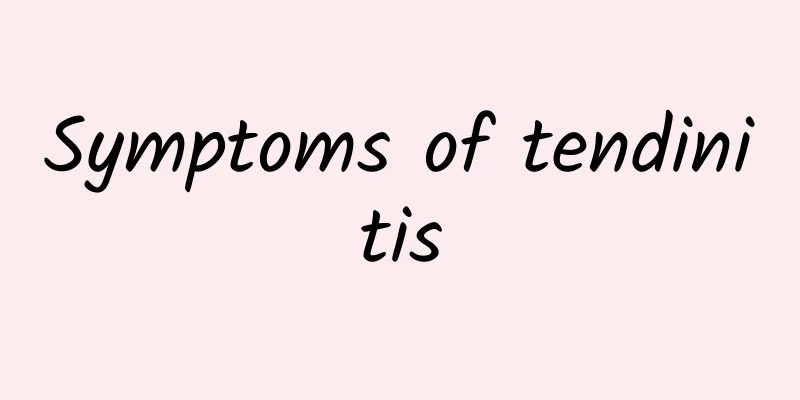What happens if I feel like urinating but can’t urinate?

|
Urination can excrete excess water, metabolic products and other substances that are useless to the human body. It is very important for the human body. However, sometimes some people feel like urinating but cannot urinate. This may be caused by urinary tract stenosis and bladder problems. This situation can be very disturbing. Let's explain in detail why you feel like urinating but cannot urinate. This situation may be a phenomenon of urine retention, which is related to and influenced by your own mental psychology and environmental factors. It is recommended to undergo gynecological and urinary system examinations, such as B-ultrasound and vaginal examination to see if there are any fibroids or cysts that cause bladder or urinary tract stenosis and other causes of urination difficulties. Also pay attention to check whether there are any abnormalities in the lumbar or sacral intervertebral discs, and then treat them according to the cause. It could also be caused by a urinary tract infection. Urinary tract infection refers to urinary tract inflammation caused by pathogens invading the urinary tract mucosa or tissue. According to the site of infection, urinary tract infection can be divided into upper urinary tract infection and lower urinary tract infection. The former is pyelonephritis, and the latter is mainly cystitis. Suggestions: It is recommended that you go to a regular hospital for a routine urine test to see if there is a possibility of urinary tract infection, or to have a urine bacterial culture. Determine whether it is infected and then provide symptomatic treatment. [Treatment strategy] Anti-infection treatment, control symptoms and reduce recurrence. [Drug treatment] Commonly used antibacterial drugs for the treatment of urinary tract infections include sulfonamides (cotrimoxazole, etc.); β-lactams (penicillins), cephalosporins, aminoglycosides [gentamicin, amikacin (amikacin), tobramycin, etc.], and quinolones [norfloxacin (fluphenazine), ofloxacin (ofloxacin), etc.].The following principles should be followed during treatment. 1. Currently, antibiotic therapy is the preferred treatment method, and sensitive antibiotics are given first according to common pathogens. 2. Perform urine culture before treatment, and then adjust medication in time according to the drug sensitivity results. 3. Whenever possible, choose antibiotics with high concentrations in urine or target organs. 4. The course of treatment should be sufficient. The use of antibiotics should continue until 2 weeks after symptoms disappear and urine culture turns negative. 5. Avoid the abuse of antibiotics, especially avoid the use of nephrotoxic drugs. 6. The inducing factors must be eliminated at the same time. If there is urinary tract malformation or dysfunction, it should be corrected or treated accordingly. 7. Strengthen the body's immune function. 8. The treatment cycle for chronic urinary tract infection is 4 to 8 weeks, the treatment cycle for acute pyelonephritis is 2 to 4 weeks, and the cycle for acute cystitis is 3-day therapy (i.e., antibiotics are taken for three consecutive days). The medication should be taken continuously during the treatment cycle and cannot be interrupted. The medication can only be stopped after the urine analysis test is normal. |
<<: What to do if urine splits?
>>: Why do women have trouble holding their urine recently?
Recommend
How to Whiten Fluoride
Everyone hopes to have beautiful white teeth, but...
What are the possible causes of shadows on the lungs?
The reasons for the shadows on the lungs are very...
Medical research methods
Medical research requires a cautious research att...
What are the benefits of sweat steaming in autumn
When autumn comes, we will see that many people c...
Symptoms of broad bean poisoning
When it comes to broad bean poisoning, I think mo...
What are the dangers of ganglion cyst?
Ganglion cysts can cause many harms. Usually, pat...
How to recover from facial nerve paralysis?
Studies have found that there are many causes of ...
How to deal with tick bites
It is a very scary thing if ticks appear in the h...
Modified prescription of Buzhong Yiqi Decoction
Traditional Chinese Medicine is a traditional Chi...
How to treat external hemorrhoids
Among all hemorrhoid patients, nearly 40% have ex...
What is the cause of diarrhea and vomiting?
In the hot summer, people have lower requirements...
Use of the pituitary gland in severe hemoptysis
The hormones secreted by the pituitary gland play...
What's causing the pain in my left arm?
There are many blood vessels and meridians in the...
What is the most effective way to treat oral inflammation?
No matter spring, summer, autumn or winter, at an...
What are the symptoms of neuralgic headache?
Neuralgia is a type of tension headache, which is...









